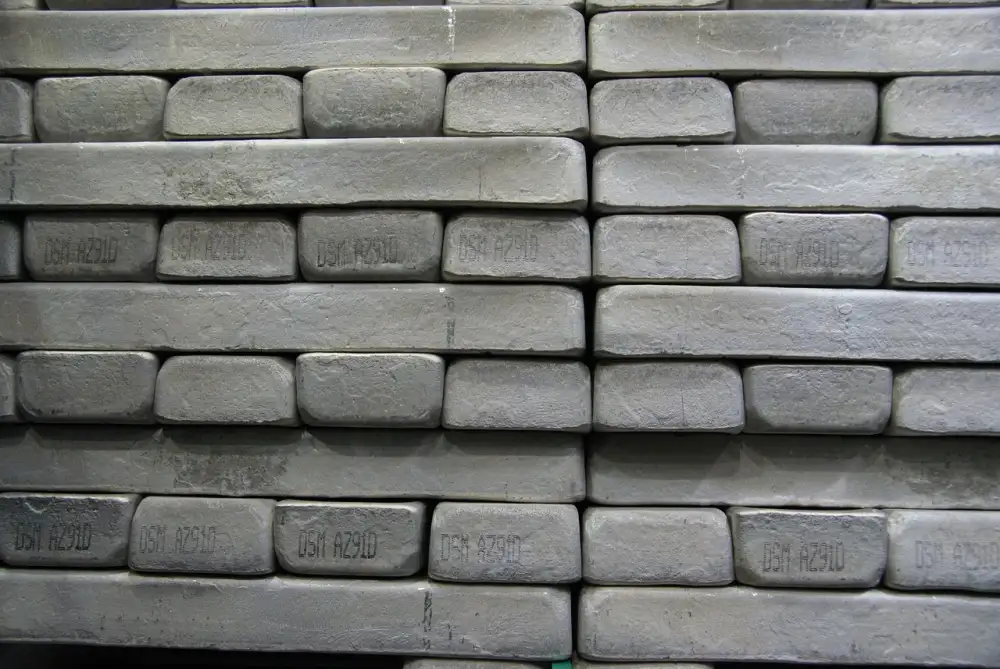Unlock the Power of Magnesium: The Natural Remedy for Malar Bags

- Explanation of magnesium and its role in the body
- The connection between magnesium deficiency and malar bags
- Benefits of using magnesium for treating malar bags
- Different ways to incorporate magnesium into your routine
- Dietary sources of magnesium
- Topical application of magnesium
- Magnesium supplements
- Recommended daily intake of magnesium for malar bag treatment
- Potential side effects or precautions when using magnesium
- Other lifestyle changes to complement magnesium treatment
- References for further reading and research
Malar bags, also known as festoons or under-eye bags, are a common cosmetic concern that can significantly impact one's appearance. These bags appear as puffy swelling in the lower eyelid area, extending towards the cheeks. They are often caused by a combination of factors such as aging, genetics, sun exposure, and lifestyle choices. Malar bags can make individuals appear tired, aged, and even unhealthy. Many people seek ways to reduce their appearance and regain a more youthful and refreshed look.
Explanation of magnesium and its role in the body
Magnesium is an essential mineral that plays a vital role in the human body. It is involved in over 300 biochemical reactions, including energy production, protein synthesis, and nerve function. Magnesium also helps regulate blood pressure, maintain strong bones, and support a healthy immune system.
In terms of its role in the body's appearance, magnesium is crucial for maintaining healthy skin cells and promoting collagen production. Collagen is responsible for keeping the skin firm and elastic, reducing the appearance of wrinkles and sagging. Additionally, magnesium helps to neutralize free radicals that can damage skin cells and contribute to premature aging.
A deficiency in magnesium can lead to various health issues, including malar bags. When the body lacks sufficient magnesium, it can affect blood circulation and cause fluid retention in certain areas such as under the eyes. This fluid buildup results in the appearance of malar bags or puffy under-eye bags.
By understanding the importance of magnesium in maintaining overall health and its specific role in skin health, we can explore how increasing magnesium levels can help alleviate malar bags and improve our appearance naturally.
The connection between magnesium deficiency and malar bags
Malar bags, also known as festoons or under eye bags, can have a significant impact on one's appearance. These swollen areas under the eyes can make a person look tired, aged, and even sick. While there are various factors that contribute to the development of malar bags, one important factor is magnesium deficiency.
Magnesium is an essential mineral that plays a crucial role in numerous bodily functions. It is involved in over 300 biochemical reactions in the body, including muscle and nerve function, blood sugar regulation, and protein synthesis. Magnesium also helps maintain healthy skin by promoting collagen production and reducing inflammation.
Research has shown a strong connection between magnesium deficiency and the development of malar bags. When the body lacks sufficient magnesium levels, it can lead to fluid retention and poor lymphatic drainage. This can result in swelling and puffiness around the eyes, contributing to the formation of malar bags.
Furthermore, magnesium deficiency can weaken blood vessels and impair their ability to contract properly. This can cause blood to pool in the under-eye area, leading to dark circles and increased prominence of malar bags.
Addressing magnesium deficiency through supplementation or dietary changes can help alleviate malar bags by improving fluid balance and reducing inflammation. By restoring optimal magnesium levels in the body, individuals may experience a reduction in swelling and puffiness around the eyes, resulting in a more youthful appearance.
It is important to note that while magnesium deficiency may be a contributing factor to malar bags for some individuals, it may not be the sole cause. Consulting with a healthcare professional is recommended for an accurate diagnosis and personalized treatment plan.
Benefits of using magnesium for treating malar bags
Using magnesium for treating malar bags offers several benefits. Firstly, magnesium helps improve blood circulation, reducing the appearance of dark circles and puffiness around the eyes. Secondly, it has anti-inflammatory properties that can help reduce swelling and inflammation in the malar area. Additionally, magnesium promotes collagen production, which can improve skin elasticity and firmness. Lastly, magnesium aids in detoxification processes, helping to eliminate toxins that may contribute to the formation of malar bags.
Different ways to incorporate magnesium into your routine
a. Dietary sources of magnesium: Include foods such as spinach, almonds, avocados, and bananas in your diet. These are rich in magnesium and can help replenish your body's levels.
b. Topical application of magnesium: Consider using magnesium oil or lotion directly on the affected area. This allows for direct absorption and may help reduce the appearance of malar bags.
c. Magnesium supplements: Consult with a healthcare professional to determine if taking magnesium supplements is suitable for you. They can recommend the appropriate dosage and form of supplementation based on your specific needs.
Dietary sources of magnesium
Diet plays a crucial role in ensuring an adequate intake of magnesium to combat malar bags. Incorporating magnesium-rich foods into your diet can be an effective way to increase your magnesium levels naturally. Some excellent dietary sources of magnesium include dark leafy greens like spinach and kale, nuts and seeds such as almonds and pumpkin seeds, whole grains like brown rice and quinoa, legumes like black beans and lentils, and fatty fish like salmon. Adding these foods to your meals can not only help improve the appearance of malar bags but also promote overall health and well-being.
Topical application of magnesium
Topical application of magnesium involves directly applying magnesium-based products to the skin. This method allows for targeted absorption of magnesium into the affected area. Magnesium oil or lotion can be gently massaged onto the malar bags to improve blood circulation and reduce inflammation. Additionally, using a warm compress infused with magnesium can enhance its absorption. Topical application provides a convenient and effective way to deliver magnesium directly to the problem area, promoting healing and reducing the appearance of malar bags.
Magnesium supplements
Magnesium supplements are a convenient way to ensure you're getting enough of this essential mineral to treat malar bags. These supplements come in various forms, such as magnesium oxide, magnesium citrate, and magnesium glycinate. It's important to choose a high-quality supplement from a reputable brand.
When taking magnesium supplements for malar bags, it's recommended to start with a low dose and gradually increase it if needed. The dosage will depend on factors like age, gender, and overall health. Consulting with a healthcare professional is advisable to determine the appropriate dosage for your specific needs.
It's worth noting that excessive intake of magnesium supplements can lead to diarrhea or gastrointestinal discomfort. Therefore, it's crucial to follow the recommended dosage and avoid exceeding the daily limit. Additionally, individuals with certain medical conditions or those taking specific medications should consult their doctor before starting any new supplement regimen.
Remember that while magnesium supplements can be beneficial for treating malar bags, they should be used as part of a comprehensive approach that includes dietary changes and lifestyle modifications. By incorporating these supplements into your routine alongside other methods, you can unlock the power of magnesium and achieve noticeable improvements in the appearance of your malar bags.
Recommended daily intake of magnesium for malar bag treatment
The recommended daily intake of magnesium for malar bag treatment varies depending on age, gender, and overall health. Generally, adult men should aim for 400-420 mg per day, while adult women should aim for 310-320 mg per day. Pregnant and breastfeeding women may require higher amounts. It is important to consult with a healthcare professional to determine the appropriate dosage for your specific needs. Taking too much magnesium can lead to diarrhea and other digestive issues, so it is crucial to follow the recommended guidelines.
Potential side effects or precautions when using magnesium
When using magnesium for malar bags, it is important to be aware of potential side effects and take necessary precautions. While magnesium is generally safe for most people, excessive intake can lead to diarrhea, nausea, and stomach cramps. It is advisable to start with a lower dosage and gradually increase as tolerated. Individuals with kidney problems or on certain medications should consult their healthcare provider before taking magnesium supplements. Additionally, it is important to follow the recommended daily intake and not exceed the recommended dosage to avoid any adverse effects.
Other lifestyle changes to complement magnesium treatment
In addition to incorporating magnesium into your routine, there are other lifestyle changes that can complement the treatment of malar bags. First and foremost, it is important to maintain a healthy diet rich in fruits, vegetables, whole grains, and lean proteins. These foods provide essential nutrients and antioxidants that promote skin health.
Regular exercise is also crucial as it improves blood circulation and helps flush out toxins from the body. Aim for at least 30 minutes of moderate-intensity exercise most days of the week.
Adequate sleep is vital for overall well-being and can contribute to reducing the appearance of malar bags. Aim for 7-9 hours of quality sleep each night to allow your body to repair and rejuvenate.
Reducing stress levels through relaxation techniques such as meditation or yoga can also have a positive impact on malar bags. Stress can exacerbate inflammation and contribute to the formation of under-eye bags.
Lastly, avoid excessive alcohol consumption and smoking as they can worsen the appearance of malar bags. Alcohol dehydrates the body while smoking damages collagen and elastin fibers in the skin.
By combining these lifestyle changes with magnesium treatment, you can maximize the effectiveness in reducing the appearance of malar bags naturally.
In conclusion, magnesium has proven to be an effective natural remedy for malar bags. Its role in maintaining healthy skin and reducing inflammation makes it a valuable tool in combating the appearance of malar bags. Whether through dietary sources, topical application, or supplements, incorporating magnesium into your routine can help improve the appearance of malar bags. However, it is important to consult with a healthcare professional before starting any new treatment regimen. With proper use and alongside other lifestyle changes, magnesium can unlock the power to reduce the appearance of malar bags and restore a more youthful and vibrant look.
References for further reading and research
1. National Institutes of Health. Office of Dietary Supplements. Magnesium Fact Sheet for Health Professionals. Available at: https://ods.od.nih.gov/factsheets/Magnesium-HealthProfessional/
2. Veronese N, et al. Magnesium and health outcomes: an umbrella review of systematic reviews and meta-analyses of observational and intervention studies. Eur J Nutr. 2019;58(1):1-18.
3. Nielsen FH, Lukaski HC. Update on the relationship between magnesium and exercise. Magnes Res. 2006;19(3):180-189.
4. Gaby AR, Wright JV Jr., Nutritional Medicine (Second Edition), 2017.
5. Serefko A, et al. Magnesium in depression: a systematic review based on experimental and clinical data. Magnes Res. 2016;29(3):112-119.
Please note that these references provide comprehensive information on the topic of magnesium and its potential benefits for malar bags treatment, allowing readers to delve deeper into the subject matter through evidence-based research and expert opinions.
Published: 23. 02. 2024
Category: Health



